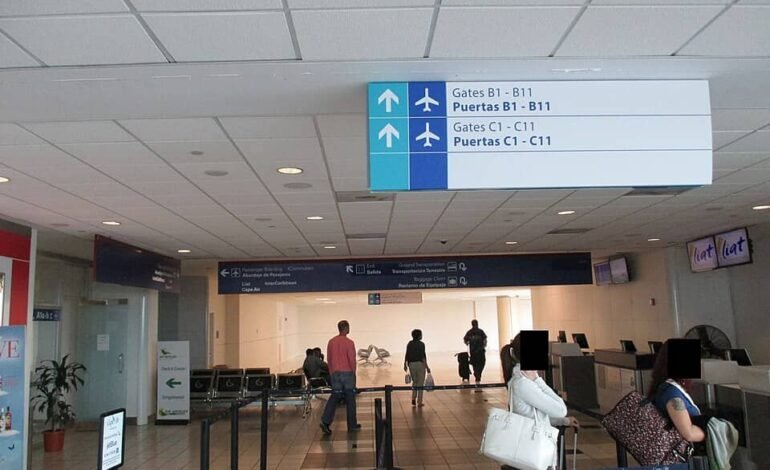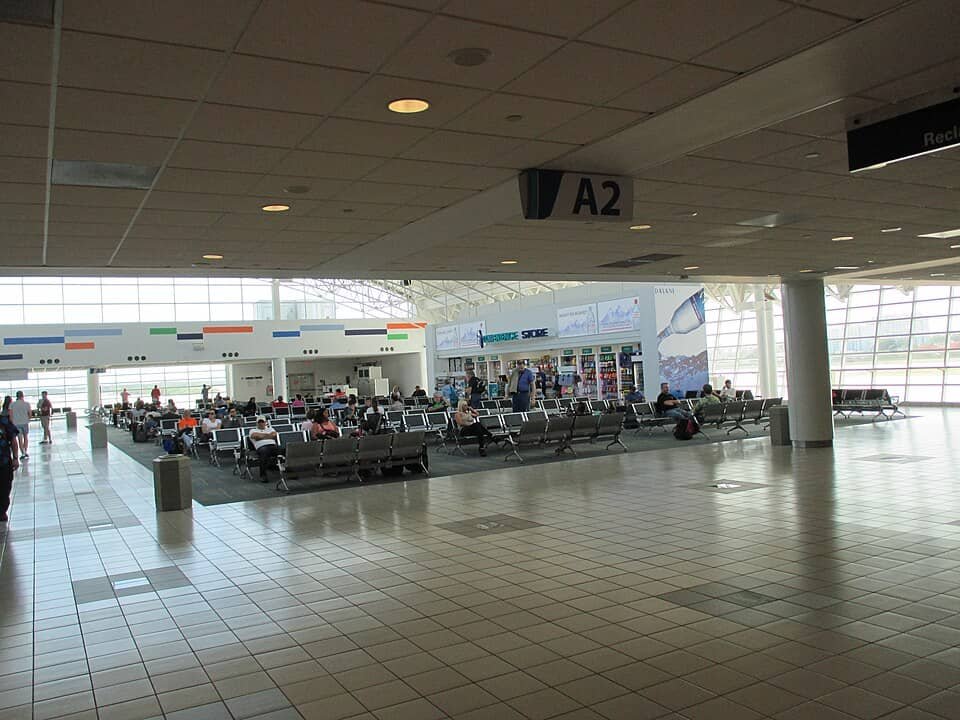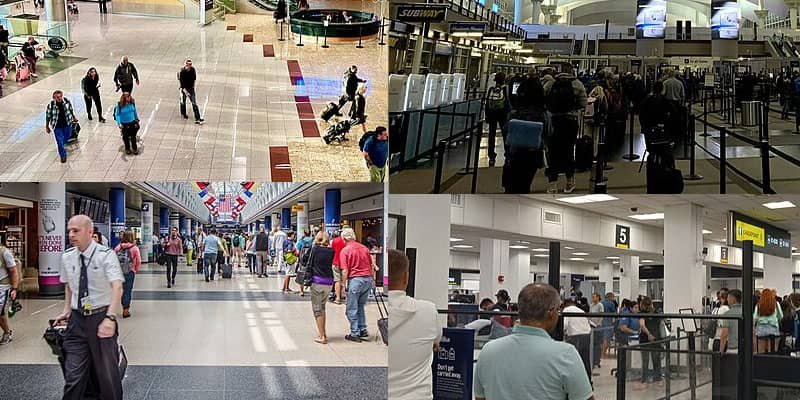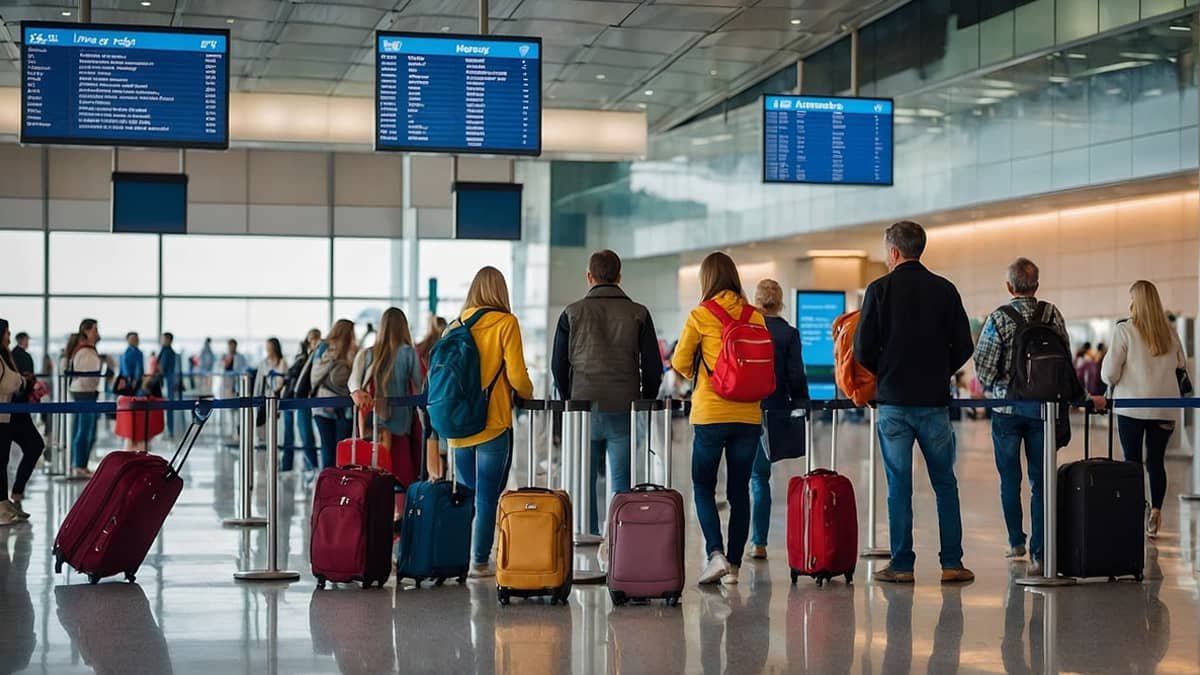The Top 8 Busiest Airports in the Caribbean in 2024

The Caribbean, a region celebrated for its stunning beaches, vibrant cultures, and thriving tourism industry, relies heavily on its airports to connect millions of travelers to its island destinations. In 2024, the region’s aviation hubs handled significant passenger traffic, reflecting the Caribbean’s enduring appeal. Based on the latest available data, here are the top eight busiest airports in the Caribbean, ranked by passenger traffic, and an exploration of their roles in driving tourism, economic growth, and regional connectivity.
1. Luis Muñoz Marín International Airport (SJU), San Juan, Puerto Rico
Passenger Traffic (2024): 13,247,382
Luis Muñoz Marín International Airport in San Juan, Puerto Rico, reigns as the Caribbean’s busiest airport. As a major hub for American Airlines, JetBlue, and Delta, SJU connects Puerto Rico to over 200 weekly flights to U.S. cities like New York and Miami, as well as Latin America and Europe. Its status as a U.S. territory airport eliminates passport requirements for American travelers, boosting its appeal. Recent upgrades to Terminal A and plans for further modernization have enhanced its capacity to handle over 13 million passengers annually, making it a critical gateway for both tourism and diaspora travel. The airport’s connectivity has fueled Puerto Rico’s tourism boom, with an 18.6% increase in arrivals reported in early 2023.
2. Punta Cana International Airport (PUJ), Punta Cana, Dominican Republic
Passenger Traffic (2024): 10,105,713
Punta Cana International Airport ranks second, handling over 10 million passengers in 2024, a 32% increase since 2019. As the Dominican Republic’s primary tourism hub, PUJ serves the country’s resort-heavy eastern coast, attracting visitors with its pristine beaches. The airport’s growth reflects the Dominican Republic’s rise as a top Caribbean destination, supported by airlines like American, United, and Arajet. PUJ’s modern facilities and extensive international routes, including to Europe and Canada, make it a vital economic driver, contributing significantly to the country’s tourism revenue and job creation.
3. Las Americas International Airport (SDQ), Santo Domingo, Dominican Republic
Passenger Traffic (2024): 5,534,893
Located in the Dominican Republic’s capital, Las Americas International Airport is the third busiest in the Caribbean. Serving Santo Domingo’s cultural and business travelers, SDQ handled over 5.5 million passengers in 2024. Its proximity to the city’s historic Colonial Zone and growing business sector makes it a key entry point. Airlines like JetBlue and American Airlines offer frequent flights to the U.S., while regional carriers connect SDQ to other Caribbean islands. The airport’s role in supporting both tourism and commerce underscores the Dominican Republic’s dominance in Caribbean air traffic.
4. Sangster International Airport (MBJ), Montego Bay, Jamaica
Passenger Traffic (2024): 5,057,000
Sangster International Airport in Montego Bay, Jamaica, is the fourth busiest, with just over 5 million passengers in 2024. Recognized as the Caribbean’s Leading Airport by the World Travel Awards for multiple years, MBJ serves Jamaica’s tourism hotspot, known for its resorts and cultural attractions. The airport’s growth, noted for its “notable progress” in 2024, is driven by strong demand from North American and European travelers. MBJ’s efficient operations and ongoing expansions ensure it remains a cornerstone of Jamaica’s tourism-driven economy.
5. Lynden Pindling International Airport (NAS), Nassau, The Bahamas
Passenger Traffic (2024): 3,700,000
Nassau’s Lynden Pindling International Airport ranks fifth, handling 3.7 million passengers in 2024. As the primary gateway to The Bahamas, NAS connects tourists to the archipelago’s renowned beaches and luxury resorts. The airport’s modernized terminals and extensive U.S. routes, particularly to Florida, drive its traffic. Its role in supporting cruise-related air travel and regional connectivity makes NAS a vital hub, with ongoing investments aimed at accommodating future growth in The Bahamas’ tourism sector.

6. Queen Beatrix International Airport (AUA), Oranjestad, Aruba
Passenger Traffic (2024): 3,293,317
Queen Beatrix International Airport in Aruba welcomed over 3.2 million passengers in 2024, securing its place as the sixth busiest. Aruba’s appeal as a year-round destination, with its white-sand beaches and vibrant Dutch-Caribbean culture, fuels AUA’s traffic. The airport serves over 25 airlines, offering non-stop flights to 31 cities worldwide. AUA’s record-breaking growth in 2024 highlights its importance to Aruba’s economy, which relies heavily on tourism and retail driven by air arrivals.
7. José Martí International Airport (HAV), Havana, Cuba
Passenger Traffic (2023): 3,192,939
José Martí International Airport in Havana ranks seventh, with nearly 3.2 million passengers in 2023 (2024 data is incomplete but suggests similar trends). As Cuba’s primary airport, HAV serves as a gateway for cultural tourism and diaspora travel, particularly from the U.S. and Latin America. Despite economic challenges, the airport maintains connectivity through carriers like American Airlines and Cubana de Aviación. Its historical significance and role in Cuba’s tourism recovery make it a key player in the Caribbean’s aviation landscape.
8. Grantley Adams International Airport (BGI), Bridgetown, Barbados
Passenger Traffic (2024): 2,372,645
Grantley Adams International Airport in Barbados rounds out the top eight, handling over 2.3 million passengers in 2024. BGI serves as a hub for Barbados’ tourism industry, known for its beaches and cultural festivals like Crop Over. The airport’s connectivity to North America, Europe, and the Caribbean supports both leisure and business travel. Recent infrastructure improvements have enhanced its capacity, ensuring BGI remains a vital link for Barbados’ economy.
The Broader Context
The Caribbean’s aviation sector saw a 4.7% passenger traffic increase in the first half of 2024, with the region handling 8.4% of global traffic. The Dominican Republic and Jamaica led in capacity growth, while Puerto Rico’s SJU benefited from its U.S. territory status. These airports drive economic growth by supporting tourism, which accounts for a significant portion of Caribbean GDP. However, challenges like seasonal fluctuations and hurricane risks persist. With regional air capacity projected to reach 14.5 million departure seats in Q1 2025, these hubs are poised for continued growth, reinforcing the Caribbean’s status as a global tourism powerhouse.
Conclusion
The top eight busiest airports in the Caribbean—SJU, PUJ, SDQ, MBJ, NAS, AUA, HAV, and BGI—reflect the region’s dynamic aviation landscape. From Puerto Rico’s connectivity hub to Barbados’ cultural gateway, these airports facilitate millions of journeys, driving tourism, commerce, and cultural exchange. As the Caribbean continues to recover and grow post-pandemic, these hubs will remain essential to the region’s economic and social fabric.
Image Credits- Luis Muñoz Marín Airport








